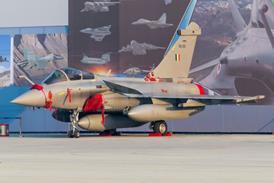As a health emergency, the Covid-19 crisis will soon enough shift gears; residents of Wuhan are emerging from lockdown and restrictions on daily life will ease in other hard-hit regions. This scourge will likely be manageable and expectations of an ongoing public health struggle may prove overly pessimistic. But whatever the long-term impact of this tragedy, spring 2020 will leave aviation to grapple with a series of shocks.
When travel restrictions relax, expect some rapid recovery to satisfy pent-up demand for must-do travel. But that surge of activity may be short lived. The economic reality is that a worldwide recession was looming even before pandemic made it a hammering reality.

Thus for the medium term – two or three years at least – the economic environment will be characterised by interest rates at essentially zero and very low oil prices, with corporate and personal debt dangerously high. Demand for travel will be way down on levels only recently assumed to prevail. Hence demand for new aircraft will be very weak; there are plenty of perfectly serviceable examples in storage and in a cheap fuel recession there is no financial incentive to pay money for replacements with more efficient engines.
Talk of a unique post-pandemic opportunity for a “green reset” that pushes aviation along the path to a more sustainable future is wishful thinking. Reality check: governments will not impose taxes on tickets and fuel; airlines will focus on survival, which means devising viable business models that downsize fleets and fill seats while rebalancing volume and margin. As most people will be wary of spending hours packed at close quarters with potential virus carriers, an increasing percentage of those seats will be in expanded business-class cabins.
For Airbus, Boeing and their multitude of suppliers, the days of planning for an output ramp-up are ancient history. For them, this rebalancing of volume and margin will mean fewer aircraft but cannot mean higher prices – so the answer must lie in imaginative finance. Here, a page from the automotive industry’s market distress playbook may be handy – create attractive grant and finance schemes that encourage airlines to scrap old aircraft for new.
For the foreseeable future, new aircraft will burn money. But the fact that they also burn less fuel has green appeal that may even attract some much-needed largesse from governments and lenders.


























